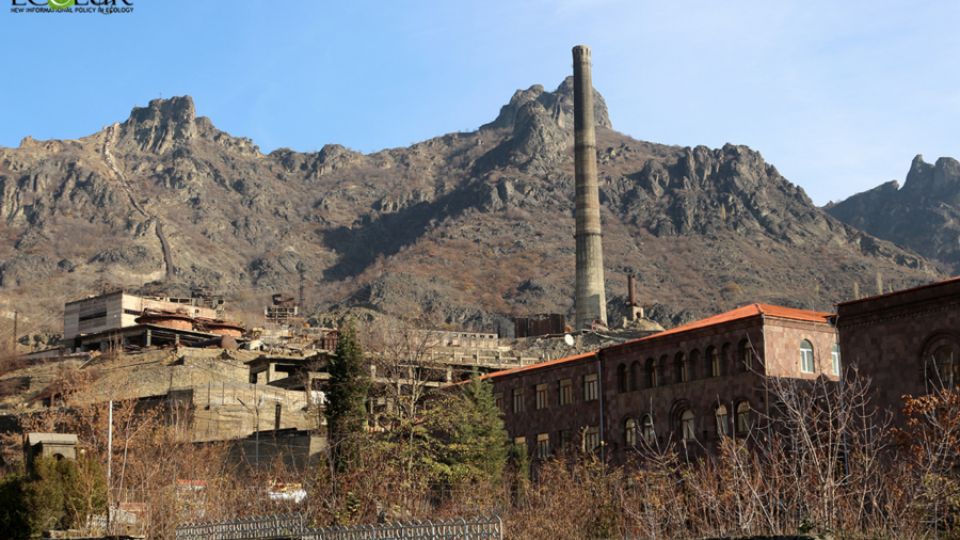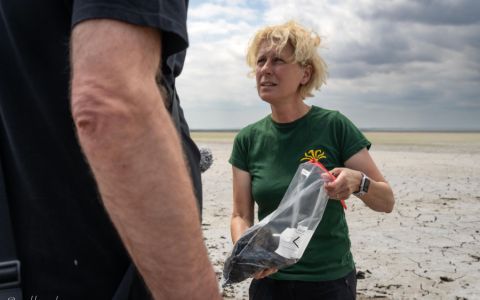Publishing the results of studies carried out by the Czech organization for chemical safety Arnika together with organizations from Armenia - the NGO Center for community mobilization and support and the informational NGO EcoLur - continues. The studies were carried out in 2021 and concerned the impact of the mining and metallurgical industry on human health and the environment. The publication presents the results of analyzes of samples taken in the extended communities of Akhtala and Alaverdi, Lori Marz. These research results complement the general picture of the distribution of heavy metals in the region.
The communities of Alaverdi, Akori, and Akhtala are influenced by the polluting facilities of the Alaverdi copper smelting plant and the infrastructure of the Akhtala mining and processing plant, which operates the Shamlugh copper deposit. As in previous cases, samples were taken in places of secondary chemical pollution, which occurs as a result of leaks, or emissions of chemical pollutants into the atmosphere, which can accumulate in biomaterials and cause damage to living organisms.
In the soil samples taken, the content of heavy metals - arsenic (As), cadmium (Cd), chromium (Cr), copper (Cu), molybdenum (Mo), nickel (Ni), lead (Pb), and zinc (Zn) - exceeded the Armenian standards limits soils for all studied metals.
In the case of copper, the Czech, Dutch, and French limits for the content of heavy metals in soil were exceeded. Research has also confirmed the hypothesis of the spread of pollutants in the direction of the dominant winds.
Sediments of the Debed River in the area in front of the central part of the city of Alaverdi (Alaverdi-Sanahin/Kayaran region), and sediments within the city, at a distance of 500 m from the place where water flows into the Debed River, were also investigated. Arnika-based program coordinator Valeriya Grechko comments: “The results showed significantly higher concentrations of heavy metals in the part of the river that flows next to the metallurgical plant. This means that the Alaverdi copper smelter and the accumulation of waste in the repositories certainly affect the state of the environment. Despite the fact that the plant was shut down in 2018, the pollution has not disappeared anywhere, but will be noticeable for a long time to come.” Thus, the long-term presence of pollutants in the environment was once again confirmed, even years after the shutdown of the industrial enterprise.
The accumulation of the studied metals was analyzed in biological samples taken from residents of Alaverdi, Akori, and Haghpat. Urine samples were taken from 35 local residents where the content of arsenic, cadmium, copper, lead, and molybdenum was examined. In Akori villagers, in two samples taken from a 43-year-old woman and a 55-year-old man, the arsenic content was close to the limit for the arsenic content of workers established in the Czech Republic (50 μg/g creatinine). The samples showed an arsenic content of 40 and 39 μg/g creatinine, respectively. The highest arsenic level was found in a 4-year-old boy from Alaverdi (55 μg/g creatinine). The results of the residents of the enlarged Alaverdi community were higher than the results of the control group from Tavush marz.
Oleg Dulgaryan, the President of the Centre for Community Mobilization and Support, says the environmental situation of the Alaverdi and Odzun communities after the closure of the copper smelter hasn't been solved and the consequences of long-term pollution will continue for a long time unless specific measures are taken for cleaning waste, chemical deposits, population health assessment, and medical activities. “I think it's not serious that after the plant was shut down, the issue of environmental subsidies to Alaverdi and Odzun communities to solve environmental and health problems were stopped, as usual, the owners left, leaving the local population to deal with all the consequences of horrible pollution. These communities should get a special status and support in solving environmental and health problems at the level of national policy,” he commented.
In the Akhtala community, bottom sediments were investigated along the Akhtala and Debed rivers in the sections of the river above and below the town of Akhtala. The results obtained confirmed the influence of industry on the chemical composition of water. Comparing the samples in the river section above the city and below, where the waste of the Akhtala mining and processing plant got into (direct discharge of waste from the factory, washout of the closed tailing dump, etc.) a significant difference in the content of the studied elements was noted. Thus, the difference between the river sections above and below Akhtala was 10 times higher for arsenic, more than 77 times higher for copper, more than 24 times higher for zinc, 27 times higher for lead, and 11 times higher for molybdenum.
In biological samples from residents of Akhtala and Shamlug, the highest level of arsenic was found in a sample of a 13-year-old boy from Shamlug (63 μg/g creatinine). This amount exceeds the limit for arsenic in workers established in the Czech Republic (50 μg/g creatinine). This raises concerns for the health of the children since the family lives about 500 meters from the Shamlug copper deposit that is being developed.
The research is being carried out by Arnika, a non-governmental organization from the Czech Republic, in cooperation with the Center for Community Mobilization and Support (CCMS) NGO and the EcoLur informational NGO, funded by the Ministry of Foreign Affairs of the Czech Republic under the Transition Promotion Program.








